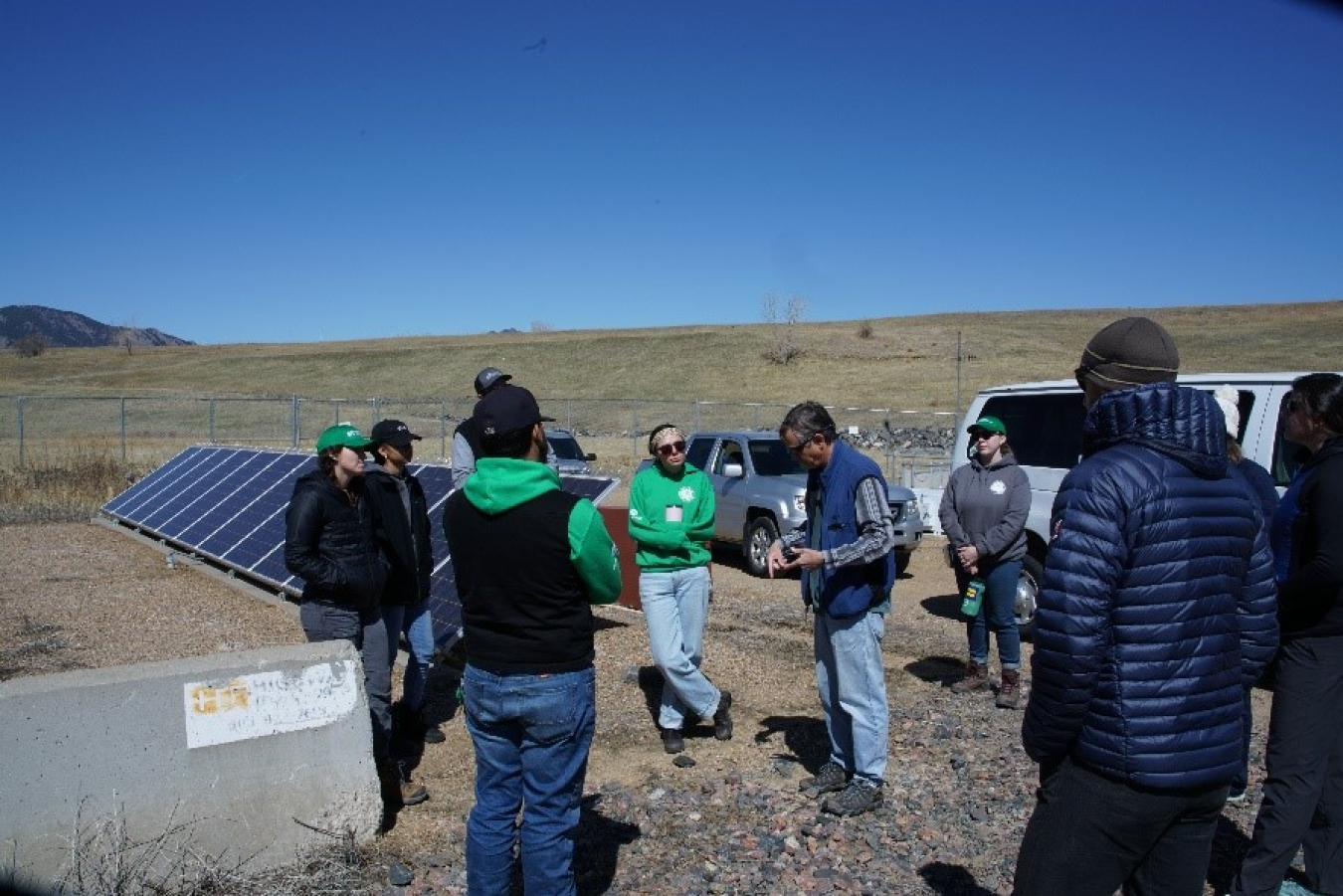Students with an interest in water and energy conservation ‘fascinated’ by opportunity to engage with professionals in discussion of cleanup and monitoring.
May 11, 2022The U.S. Department of Energy (DOE) Office of Legacy Management (LM) hosted members of the Mile High Youth Corps’ Energy and Water Conservation Program for a tour of Rocky Flats Site, Colorado, on April 8.
“Our corps members just finished the Waste module in our Roots of Success course, so our visit to Rocky Flats was the perfect real-life application of the knowledge they gained,” said Samantha Mooney, an Energy and Water Conservation education specialist for the Mile High Youth Corps. “They were fascinated to see a former nuclear site and loved the opportunity to speak with scientists tasked with maintaining and monitoring.”

Rocky Flats Site groundwater lead John Boylan engages with Rocky Mountain Youth Corps members, describing how the Rocky Flats Site’s Solar Ponds Plume Treatment System captures uranium and nitrate-contaminated groundwater.
The Mile High Youth Corps is a nonprofit organization established in 1992 to give young adults ages 17 to 24 a chance to earn an income and learn hands-on job skills while serving in their communities. The Energy and Water Conservation Program engages corps members in providing water and energy efficiency measures to income-qualifying households and nonprofit facilities. Over the course of three months to two years, corps members gain the customer service skills and technical training necessary for careers in the “green” industry.
LM support contractor (LMSP) groundwater lead John Boylan said that because education and outreach are such important aspects of LM’s mission, he and his colleagues enjoy opportunities to interact with the next generation of scientists.
“I think tours like this are one of the most important activities we do,” he said.
“I think we need more young people that want to make a positive difference, whatever that may be,” added LMS surface water lead George Squibb.
From 1951 to 1992, the Rocky Flats Plant manufactured components of nuclear weapons at the site. During its $7 billion cleanup, more than 800 structures were decontaminated and demolished. Contaminated material was shipped to offsite disposal facilities. Remediation of contaminated soil and groundwater was completed in October 2005. At the time, it was the largest cleanup of a “Superfund” site under the Comprehensive Environmental Response, Compensation and Liability Act (CERCLA). Today, LM provides long-term stewardship of the site to ensure the continued protection of human health and the environment.
Joined by Lindsay Murl and Jennifer Talbert of the Colorado Department of Public Health and Environment, the youth corps tour visited the Rocky Flats Site’s Solar Ponds Plume Treatment System (SPPTS), which was built in 1999 to capture uranium and nitrate-contaminated groundwater. The system is entirely off the grid and uses only solar-generated power. The SPPTS has been extensively reconfigured since Rocky Flats closed, now capturing more contaminated groundwater and treating it more effectively. Boylan explained to corps members that microorganisms consume the nitrates to decontaminate the water in an environmentally friendly way.
The group also got the chance to see an automated surface water monitoring station that operates 24/7 for efficient collection of up to 4,000 water samples every year. Squibb explained how telemetry helps him remotely monitor the equipment.
With the manufacturing plant now gone, control of the surrounding area was transferred to the U.S. Fish and Wildlife Service and now operates as the Rocky Flats Wildlife Refuge, while the DOE continues to manage the central portion. LMS ecology lead Karin McShea told the corps members about the many species that now thrive at the refuge and the DOE site, including the large herd of elk that made an appearance during the tour.

